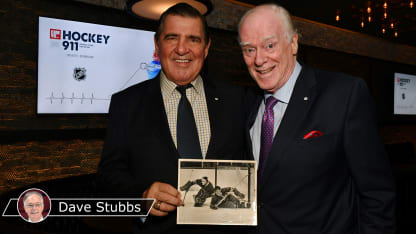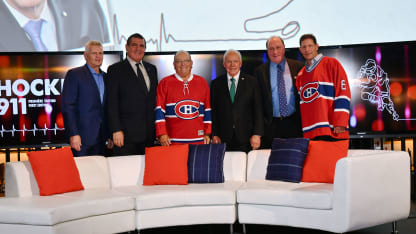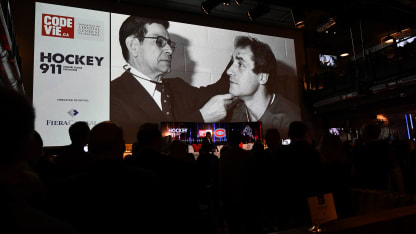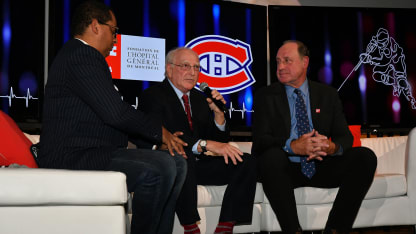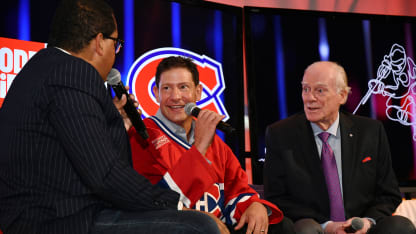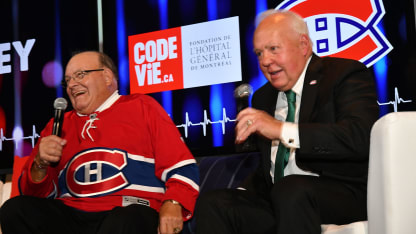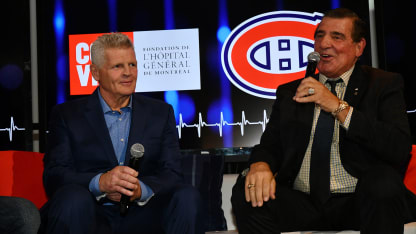Fast thinking and quick action by Dr. David Mulder (right) saved the life of Canadiens forward Trent McCleary (center) on Jan. 29, 2000.
Wearing a No. 1 name-plated Canadiens jersey, Bowman was nearly overcome with emotion discussing Mulder's involvement with his own family. The doctor counselled in the treatment of Bowman's son, Stan, the Chicago Blackhawks general manager, who in 2007 was diagnosed with Hodgkin lymphoma, a cancer of the lymph nodes. And he performed triple-bypass surgery on Bowman's father, prolonging his life by a decade.
Cournoyer, Gainey and Nilan each had their own remarkable stories about Kinnear and Mulder, a little mad scientist brightly stirred in. Gainey, whose foundation was a partner in Hockey 911, remembered Kinnear not so much finessing a separated shoulder back into place as muscling it, and the one-mile taxi ride up to the General from the Forum for treatment, in equipment but for skates, then coming back down to lace up to finish the game.
Mulder's thick Canadiens casebook involves on- and off-ice injuries and dramatic challenges, including broken bones, tendons slashed by skates, deep lacerations and cracked vertebrae suffered by
Brian Savage
, McCleary,
Richard Zednik
,
Donald Audette
, Max Pacioretty and others, as well as the cancers that struck captains
Jean Beliveau
and
Saku Koivu
.
